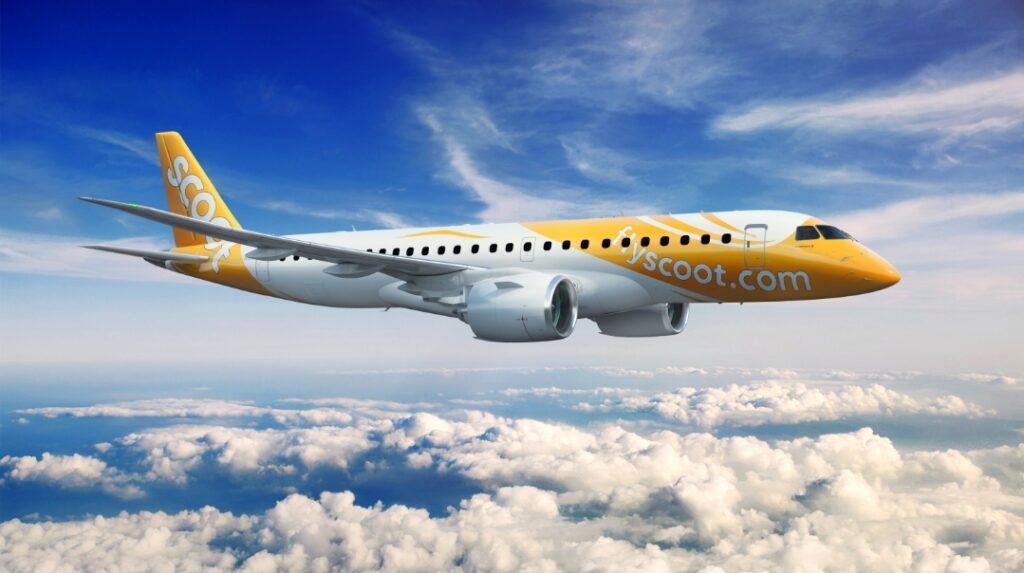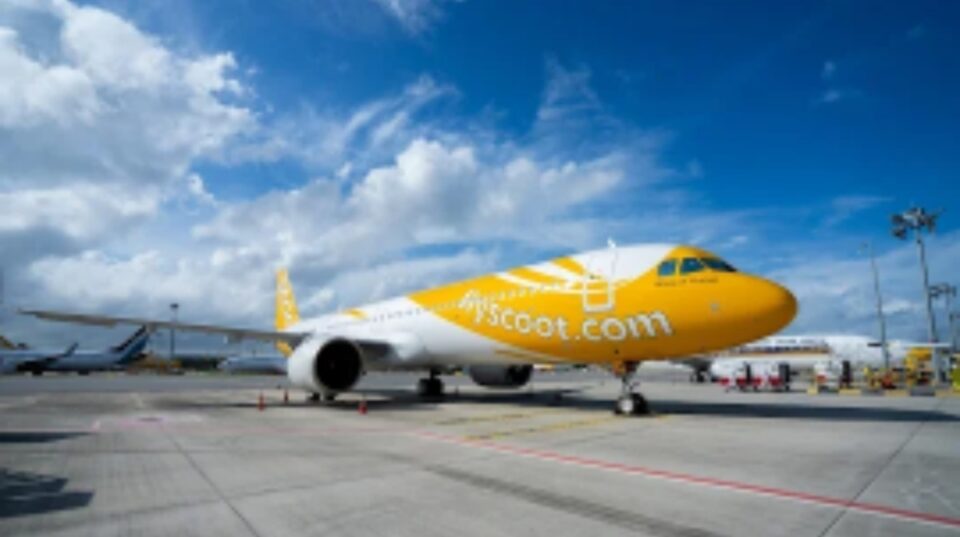How Scoot’s Network Expansion Signals a New Era of Customer-Centric Growth in Southeast Asian Aviation
Picture this: You’re planning that dream vacation to Komodo National Park or exploring the cultural heritage of Central Java, but the journey feels out of reach due to limited flight options and hefty price tags. Sound familiar? For millions of travelers across Southeast Asia, this scenario has been an all-too-common frustration. However, Scoot’s latest network expansion is changing the game entirely, revealing something profound about the evolution of customer experience in budget aviation.
The Singapore Airlines subsidiary just announced four new destinations launching between December 2025 and February 2026: Labuan Bajo, Medan, Palembang, and Semarang. But this isn’t just another route announcement. As Scoot’s CEO Leslie Thng emphasized, “We are proud to strengthen Scoot’s presence in Indonesia with the launch of new flights to Labuan Bajo, Medan, Palembang and Semarang. These additions underscore our commitment to strengthen our network connectivity in Southeast Asia and provide accessible and seamless connections to the rest of the wider SIA Group network through Singapore. We will continue to seize new opportunities to expand our footprint and offer customers more travel options and memorable experiences.” This is a masterclass in understanding customer needs and translating market insights into meaningful experiences.
Understanding the Customer Experience Revolution in Low-Cost Aviation
The budget airline industry has undergone a remarkable transformation over the past decade. What once was purely about rock-bottom prices has evolved into a sophisticated balancing act between affordability and experience quality. Modern travelers, particularly in Southeast Asia’s growing middle class, expect more than just cheap seats—they want reliable service, convenient connections, and access to previously underserved destinations.
Scoot recognized this shift early. Since partnering with Qualtrics in 2018 to enhance customer experience analytics, the airline has been systematically gathering post-flight feedback across all customer touchpoints. This data-driven approach reveals a fundamental truth: customer satisfaction in low-cost aviation isn’t just about price anymore—it’s about delivering consistent value throughout the entire journey.
Research consistently shows that responsiveness and personalization factors in low-cost carriers have a greater impact on customer satisfaction than those of full-service carriers. This means budget airlines actually have more opportunity to exceed expectations and build loyalty through targeted improvements.
The Strategic Brilliance Behind Destination Selection
Scoot’s new route selections demonstrate sophisticated market intelligence beyond traditional aviation planning. Each destination serves a distinct customer segment while addressing specific experience gaps in the market.
Labuan Bajo represents the adventure-seeker segment. As the gateway to Komodo National Park, a UNESCO World Heritage site, this attracts travelers seeking unique experiences beyond traditional beach destinations. Offering twice-weekly flights starting at INR 13,500, Scoot makes this bucket-list destination accessible to budget-conscious travelers who previously faced complex multi-leg journeys or premium pricing.
Medan caters to cultural explorers and nature enthusiasts. The gateway to Lake Toba and North Sumatra’s rich cultural landmarks fills a significant gap in Southeast Asian connectivity. Daily flights starting at INR 10,000 position Medan as an accessible base for deeper Indonesian exploration.
Palembang and Semarang target heritage tourism and business travel markets respectively. These cities offer authentic Indonesian experiences away from overcrowded tourist centers, appealing to increasingly sophisticated travelers seeking cultural immersion.
The pricing strategy is equally thoughtful. Starting fares between INR 10,000-13,500 represent significant value compared to existing routing options, making these destinations accessible to India’s growing middle class and regional travelers.
Addressing Customer Pain Points Through Network Design
The expansion addresses several chronic customer experience challenges in Southeast Asian aviation. Limited connectivity to secondary cities has long frustrated travelers who faced expensive multi-stop journeys or restricted their exploration to major hubs. By directly connecting Singapore to these emerging destinations, Scoot eliminates routing complexity while expanding customer choice.
The timing is particularly strategic. Southeast Asia’s aviation market is experiencing robust recovery, with intra-ASEAN travel growing 7% in 2025 compared to 2024. Regional travel now accounts for 45% of international arrivals, up from 37% pre-pandemic. This shift toward regional exploration aligns perfectly with Scoot’s expanded network coverage.
Indonesia’s tourism sector is booming, with 13.9 million international visitors in 2024 representing a 19% increase. The country targets 14-16 million foreign visitors in 2025, generating US$19-22.1 billion in foreign exchange earnings. Scoot’s expansion directly supports this growth while capturing emerging demand patterns.
Operational Excellence as Customer Experience Strategy
Network expansion alone doesn’t guarantee customer satisfaction—execution matters enormously. Scoot’s approach demonstrates understanding of this critical connection. The airline has invested heavily in operational reliability, recognizing that on-time performance and service consistency drive customer confidence more than any marketing campaign.
The aircraft selection for each route reveals operational sophistication. Embraer E190-E2 aircraft for Labuan Bajo and Palembang flights optimize economics for developing routes while providing modern passenger amenities. Airbus A320 family aircraft for Medan and Semarang offer greater capacity and operational flexibility as demand grows.
Frequency planning also reflects customer-centric thinking. Routes start with conservative frequencies that ensure sustainability while building market confidence. Planned frequency increases, like Semarang’s growth from three to four weekly flights, demonstrate commitment to route development based on actual demand patterns.
The Technology-Enhanced Experience Advantage
Scoot’s investment in customer experience technology creates competitive advantages that extend far beyond route networks. The airline’s ScootHub inflight portal transforms the traditional budget airline experience by offering games, travel content, and real-time flight tracking through passengers’ personal devices.
This digital-first approach resonates particularly well with Southeast Asia’s tech-savvy travelers. The region’s high mobile commerce adoption rates and digital payment preferences align perfectly with Scoot’s streamlined online booking and service delivery model.
The airline’s partnership with Singapore Airlines for broader network connectivity also enhances customer value. Passengers can seamlessly connect to SIA’s global network through Singapore, effectively giving budget travelers access to premium route options at accessible price points.
Market Response and Competitive Positioning
Scoot’s expansion comes at a time when customer expectations for low-cost carriers are evolving rapidly. Research indicates that 70% of passengers now prioritize personalized experiences, even within budget segments. Airlines that fail to adapt risk losing market share to more customer-centric competitors.
The competitive landscape in Southeast Asia favors airlines that can combine operational efficiency with experience innovation. While traditional full-service carriers offer premium experiences at premium prices, and ultra-low-cost carriers compete purely on price, Scoot occupies a valuable middle ground that delivers reliable service with modern amenities at competitive rates.
Customer reviews and satisfaction scores reflect this positioning. While Scoot faces challenges common to all budget airlines—including service recovery during disruptions and ancillary fee transparency—the airline’s consistent investment in experience improvements has maintained competitive satisfaction levels within the low-cost segment.
Building Customer Loyalty Through Consistent Value Delivery
The expansion strategy reveals sophisticated understanding of customer loyalty drivers in budget aviation. Rather than competing solely on price, Scoot focuses on consistent value delivery across multiple touchpoints. This approach builds customer confidence and repeat business more effectively than promotional pricing alone.
Route development timing demonstrates market sensitivity. Launching services during Southeast Asia’s peak travel recovery period maximizes initial load factors while building positive customer experiences from day one. Strong initial performance creates positive word-of-mouth marketing that sustains long-term route success.
The integration with Singapore’s broader aviation ecosystem also enhances customer value. Changi Airport’s world-class facilities and connectivity options mean Scoot passengers enjoy premium ground experiences regardless of their ticket price. This synergy between airline service and airport experience creates overall journey satisfaction that exceeds customer expectations.

Implications for the Future of Regional Aviation
Scoot’s network expansion represents broader trends reshaping Southeast Asian aviation. The shift toward regional connectivity over long-haul routes reflects changing customer preferences and market dynamics. Travelers increasingly prioritize experiential diversity over destination prestige, creating opportunities for airlines that can efficiently serve emerging markets.
The success of this expansion will likely influence competitive responses across the region. Other low-cost carriers will need to evaluate their own network strategies and customer experience capabilities to remain competitive. This competitive pressure ultimately benefits customers through improved service standards and expanded travel options.
The integration of customer feedback and data analytics into route planning also sets new standards for market-responsive aviation planning. Airlines that can effectively translate customer insights into operational decisions will gain sustainable competitive advantages in increasingly sophisticated markets.
Key Takeaways for Customer Experience Leaders
Scoot’s network expansion offers several valuable lessons for customer experience professionals across industries:
Customer-centric route planning creates competitive differentiation. Understanding unmet customer needs and addressing them through strategic expansion builds market position more effectively than reactive competitive responses.
Data-driven decision making enhances customer satisfaction. Systematic feedback collection and analysis enable organizations to identify improvement opportunities that directly impact customer experience quality.
Operational excellence enables experience delivery. No amount of marketing can overcome poor execution. Investing in operational capabilities that support consistent service delivery is essential for customer experience success.
Technology integration amplifies customer value. Digital tools and platforms can enhance traditional service offerings without proportionally increasing costs, creating sustainable competitive advantages.
Market timing maximizes customer impact. Understanding broader market dynamics and customer behavior patterns allows organizations to launch initiatives when they can achieve maximum positive impact.
The expansion demonstrates that customer experience excellence in budget segments requires different strategies than premium markets, but the fundamental principle remains constant: understanding and consistently delivering what customers value most drives sustainable business success.
As Scoot prepares to welcome passengers to these exciting new destinations, the airline continues proving that budget aviation can deliver experiences that exceed customer expectations while maintaining operational efficiency. This approach will likely define the future of regional aviation in Southeast Asia and beyond.

